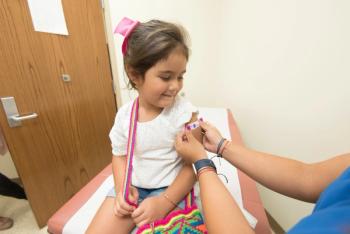
AHRQ Report Shows Decline in HAIs in US Hospitals Since 2010
Preliminary data from the Agency for Healthcare Research and Quality’s (AHRQ) “National Scorecard on Rates of Hospital-Acquired Conditions” suggests that progress has been made in reducing the incidence of hospital-acquired infections and other facility-linked health problems in US hospitals.
As an example of the gallows humor many infectious disease specialists use to cope with the clinical challenges they routinely face, a popular joke within the profession often ends with the punchline, “So I tell patients: Don’t get sick.”
The gag, unfortunately, was actually a sad commentary on the US healthcare system, which, historically at least, has had a significant problem with hospital-acquired infections (HAIs). However, preliminary
Indeed, early estimates for 2015 indicate that there has been a 21% decline in what the report calls “hospital-acquired conditions (HACs)”—including adverse drug reactions, pressure ulcers, and catheter-associated urinary tract infections (CAUTIs)—since 2010. Overall, according to AHRQ statistics, there were 3.1 million fewer HACs experienced by hospital patients from 2010 to 2015 compared to projections for the 5-year period based on the rate of HACs recorded in 2010.
In 2015, there were 115 HACs per 1,000 hospital discharges, down from 121 in 2014. The AHRQ estimates that there were 980,000 “fewer incidents of harm” (37,000 fewer deaths) in 2015 than there would have been had HACs continued at the 2010 rate. CAUTIs accounted for 15% of the HACs in 2015, according to the AHRQ. To put these findings into context,
“We estimate that nearly 125,000 fewer patients died in the hospital as a result of HACs and that approximately $28 billion in health care costs were saved from 2010 to 2015 due to the reductions in HACs,” the AHRQ writes. “Although the precise causes of the decline in patient harm are not fully understood, the increase in safety has occurred during a period of concerted attention by hospitals throughout the country to reduce adverse events.”
Notably, the AHRQ reports that the decline in HACs resulted in estimated cost savings of approximately $8.3 billion in 2015 alone. The agency credits the reduction in HACs and associated costs to initiatives implemented by the Centers for Medicare & Medicaid Services (CMS), as well as the US Department of Health and Human Services (HHS) Partnership for Patients (PfP) initiative. The
“These data through 2015 indicate that it is possible to make substantial progress in reducing virtually all types of HACs simultaneously…” the AHRQ writes. “CMS and HHS leaders have termed this objective as achieving ‘Safety Across the Board’ and believe it should be a national goal. AHRQ’s patient safety programs continue to enable and guide improvements in health care delivery. In addition to sustaining further improvements in the safety of hospital care, the [AHRQ] has substantially expanded its efforts in order to extend the success that hospitals have achieved to all health care settings. As part of this initiative, AHRQ is actively targeting current challenges such as diagnostic error and antibiotic resistance and developing and disseminating evidence-based practices that will sustain national progress in making health care safer.”
Brian P. Duleavy is a medical writer and editor based in New York. His work has appeared in numerous healthcare-related publications. He is the former editor of Infectious Disease Special Edition.
Newsletter
Stay ahead of emerging infectious disease threats with expert insights and breaking research. Subscribe now to get updates delivered straight to your inbox.



























































































































































































































































































































